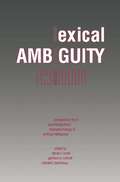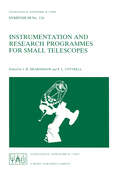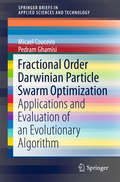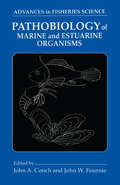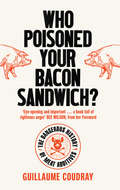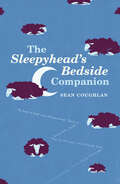- Table View
- List View
Lanthanide and Actinide Chemistry (Inorganic Chemistry: A Textbook Series #27)
by Simon CottonThe only introduction into the exciting chemistry of Lanthanides and Actinides. The book is based on a number of courses on "f elements" The author has a long experience in teaching this field of chemistry Lanthanides have become very common elements in research and technology applications; this book offers the basic knowledge The book offers insights into a vast range of applications, from lasers to synthesis The Inorganic Chemistry: A Textbook series reflects the pivotal role of modern inorganic and physical chemistry in a whole range of emerging areas, such as materials chemistry, green chemistry and bioinorganic chemistry, as well as providing a solid grounding in established areas such as solid state chemistry, coordination chemistry, main group chemistry and physical inorganic chemistry. Lanthanide and Actinide Chemistry is a one-volume account of the Lanthanides (including scandium and yttrium), the Actinides and the Transactinide elements, intended as an introductory treatment for undergraduate and postgraduate students. The principal features of these elements are set out in detail, enabling clear comparison and contrast with the Transition Elements and Main Group metals. The book covers the extraction of the elements from their ores and their purification, as well as the synthesis of the man-made elements; the properties of the elements and principal binary compounds; detailed accounts of their coordination chemistry and organometallic chemistry, from both preparative and structural viewpoints, with a clear explanation of the factors responsible for the adoption of particular coordination numbers; spectroscopy and magnetism, especially for the lanthanides, with case studies and accounts of applications in areas like magnetic resonance imaging, lasers and luminescence; nuclear separations and problems in waste disposal for the radioactive elements, particularly in the context of plutonium. Latest developments are covered in areas like the synthesis of the latest man-made elements, whilst there is a whole chapter on the application of lanthanide compounds in synthetic organic chemistry. End-of-chapter questions suitable for tutorial discussions are provided, whilst there is a very comprehensive bibliography providing ready access to further reading on all topics.
Lanthanide and Actinide Chemistry (Inorganic Chemistry: A Textbook Series #27)
by Simon CottonThe only introduction into the exciting chemistry of Lanthanides and Actinides. The book is based on a number of courses on "f elements" The author has a long experience in teaching this field of chemistry Lanthanides have become very common elements in research and technology applications; this book offers the basic knowledge The book offers insights into a vast range of applications, from lasers to synthesis The Inorganic Chemistry: A Textbook series reflects the pivotal role of modern inorganic and physical chemistry in a whole range of emerging areas, such as materials chemistry, green chemistry and bioinorganic chemistry, as well as providing a solid grounding in established areas such as solid state chemistry, coordination chemistry, main group chemistry and physical inorganic chemistry. Lanthanide and Actinide Chemistry is a one-volume account of the Lanthanides (including scandium and yttrium), the Actinides and the Transactinide elements, intended as an introductory treatment for undergraduate and postgraduate students. The principal features of these elements are set out in detail, enabling clear comparison and contrast with the Transition Elements and Main Group metals. The book covers the extraction of the elements from their ores and their purification, as well as the synthesis of the man-made elements; the properties of the elements and principal binary compounds; detailed accounts of their coordination chemistry and organometallic chemistry, from both preparative and structural viewpoints, with a clear explanation of the factors responsible for the adoption of particular coordination numbers; spectroscopy and magnetism, especially for the lanthanides, with case studies and accounts of applications in areas like magnetic resonance imaging, lasers and luminescence; nuclear separations and problems in waste disposal for the radioactive elements, particularly in the context of plutonium. Latest developments are covered in areas like the synthesis of the latest man-made elements, whilst there is a whole chapter on the application of lanthanide compounds in synthetic organic chemistry. End-of-chapter questions suitable for tutorial discussions are provided, whilst there is a very comprehensive bibliography providing ready access to further reading on all topics.
Lanthanide and Actinide Chemistry (Inorganic Chemistry: A Textbook Series)
by Simon CottonLANTHANIDE AND ACTINIDE CHEMISTRY Lanthanides and actinides, also known as “f elements,” are a group of metals which share certain important properties and aspects of electronic structure. They have a huge range of applications in the production of electronic devices, magnets, superconductors, fuel cells, sensors, and more. The cursory treatment of these important metals in most inorganic chemistry textbooks makes a book-length treatment essential. Since 2006, Lanthanide and Actinide Chemistry has met this need with a thorough, accessible overview. With in-depth accounts of the lanthanides, actinides, and transactinides, this book is ideal for both undergraduate and postgraduate students in inorganic chemistry or chemical engineering courses. Now updated to reflect groundbreaking recent research, this promises to continue as the essential introductory volume on the subject. Readers of the second edition of Lanthanide and Actinide Chemistry will also find: New and expanded subject areas including lanthanide enzymes, single-molecule magnets, luminescence and upconversion, organometallic and coordination chemistry; and many more. Up-to-date information on the myriad modern applications of f-elements Lists of objectives and learning goals at the start of each chapter Lanthanide and Actinide Chemistry is ideal for advanced undergraduates and graduate students in f-element chemistry, inorganic chemistry, or any related field. INORGANIC CHEMISTRY ADVANCED TEXTBOOK This series reflects the pivotal role of modern inorganic and physical chemistry in a whole range of emerging areas, such as materials chemistry, green chemistry and bioinorganic chemistry, as well as providing a solid grounding in established areas such as solid state chemistry, coordination chemistry, main group chemistry and physical inorganic chemistry.
Lanthanide and Actinide Chemistry (Inorganic Chemistry: A Textbook Series)
by Simon CottonLANTHANIDE AND ACTINIDE CHEMISTRY Lanthanides and actinides, also known as “f elements,” are a group of metals which share certain important properties and aspects of electronic structure. They have a huge range of applications in the production of electronic devices, magnets, superconductors, fuel cells, sensors, and more. The cursory treatment of these important metals in most inorganic chemistry textbooks makes a book-length treatment essential. Since 2006, Lanthanide and Actinide Chemistry has met this need with a thorough, accessible overview. With in-depth accounts of the lanthanides, actinides, and transactinides, this book is ideal for both undergraduate and postgraduate students in inorganic chemistry or chemical engineering courses. Now updated to reflect groundbreaking recent research, this promises to continue as the essential introductory volume on the subject. Readers of the second edition of Lanthanide and Actinide Chemistry will also find: New and expanded subject areas including lanthanide enzymes, single-molecule magnets, luminescence and upconversion, organometallic and coordination chemistry; and many more. Up-to-date information on the myriad modern applications of f-elements Lists of objectives and learning goals at the start of each chapter Lanthanide and Actinide Chemistry is ideal for advanced undergraduates and graduate students in f-element chemistry, inorganic chemistry, or any related field. INORGANIC CHEMISTRY ADVANCED TEXTBOOK This series reflects the pivotal role of modern inorganic and physical chemistry in a whole range of emerging areas, such as materials chemistry, green chemistry and bioinorganic chemistry, as well as providing a solid grounding in established areas such as solid state chemistry, coordination chemistry, main group chemistry and physical inorganic chemistry.
Lexical Ambiguity Resolution: Perspective from Psycholinguistics, Neuropsychology and Artificial Intelligence
by Garrison W. Cottrell Steven L. Small Michael K. TanenhausThe most frequently used words in English are highly ambiguous; for example, Webster's Ninth New Collegiate Dictionary lists 94 meanings for the word "run" as a verb alone. Yet people rarely notice this ambiguity. Solving this puzzle has commanded the efforts of cognitive scientists for many years. The solution most often identified is "context": we use the context of utterance to determine the proper meanings of words and sentences. The problem then becomes specifying the nature of context and how it interacts with the rest of an understanding system. The difficulty becomes especially apparent in the attempt to write a computer program to understand natural language. Lexical ambiguity resolution (LAR), then, is one of the central problems in natural language and computational semantics research.A collection of the best research on LAR available, this volume offers eighteen original papers by leading scientists. Part I, Computer Models, describes nine attempts to discover the processes necessary for disambiguation by implementing programs to do the job. Part II, Empirical Studies, goes into the laboratory setting to examine the nature of the human disambiguation mechanism and the structure of ambiguity itself.A primary goal of this volume is to propose a cognitive science perspective arising out of the conjunction of work and approaches from neuropsychology, psycholinguistics, and artificial intelligence--thereby encouraging a closer cooperation and collaboration among these fields.Lexical Ambiguity Resolution is a valuable and accessible source book for students and cognitive scientists in AI, psycholinguistics, neuropsychology, or theoretical linguistics.
Matter: A Very Short Introduction (Very Short Introductions)
by Geoff CottrellWhat is matter? Matter is the stuff from which we and all the things in the world are made. Everything around us, from desks, to books, to our own bodies are made of atoms, which are small enough that a million of them can fit across the breadth of a human hair. Inside every atom is a tiny nucleus and orbiting the nucleus is a cloud of electrons. The nucleus is made out of protons and neutrons, and by zooming in further you would find that inside each there are even smaller particles, quarks. Together with electrons, the quarks are the smallest particles that have been seen, and are the indivisible fundamental particles of nature that have existed since the Big Bang, almost 14 billion years ago. The 92 different chemical elements that all normal matter is made from were forged billions of years ago in the Big Bang, inside stars, and in violent stellar explosions. This Very Short Introduction takes us on a journey from the human scale of matter in the familiar everyday forms of solids, liquids, and gases to plasmas, exotic forms of quantum matter, and antimatter. On the largest scales matter is sculpted by gravity into planets, stars, galaxies, and vast clusters of galaxies. All the matter that that we normally encounter however constitutes only 5% of the matter that exists. The remaining 95% comes in two mysterious forms: dark matter, and dark energy. Dark matter is necessary to stop the galaxies from flying apart, and dark energy is needed to explain the observed acceleration of the expansion of the universe. Geoff Cottrell explores the latest research into matter, and shows that there is still a lot we don't know about the stuff our universe is made of. ABOUT THE SERIES: The Very Short Introductions series from Oxford University Press contains hundreds of titles in almost every subject area. These pocket-sized books are the perfect way to get ahead in a new subject quickly. Our expert authors combine facts, analysis, perspective, new ideas, and enthusiasm to make interesting and challenging topics highly readable.
Matter: A Very Short Introduction (Very Short Introductions)
by Geoff CottrellWhat is matter? Matter is the stuff from which we and all the things in the world are made. Everything around us, from desks, to books, to our own bodies are made of atoms, which are small enough that a million of them can fit across the breadth of a human hair. Inside every atom is a tiny nucleus and orbiting the nucleus is a cloud of electrons. The nucleus is made out of protons and neutrons, and by zooming in further you would find that inside each there are even smaller particles, quarks. Together with electrons, the quarks are the smallest particles that have been seen, and are the indivisible fundamental particles of nature that have existed since the Big Bang, almost 14 billion years ago. The 92 different chemical elements that all normal matter is made from were forged billions of years ago in the Big Bang, inside stars, and in violent stellar explosions. This Very Short Introduction takes us on a journey from the human scale of matter in the familiar everyday forms of solids, liquids, and gases to plasmas, exotic forms of quantum matter, and antimatter. On the largest scales matter is sculpted by gravity into planets, stars, galaxies, and vast clusters of galaxies. All the matter that that we normally encounter however constitutes only 5% of the matter that exists. The remaining 95% comes in two mysterious forms: dark matter, and dark energy. Dark matter is necessary to stop the galaxies from flying apart, and dark energy is needed to explain the observed acceleration of the expansion of the universe. Geoff Cottrell explores the latest research into matter, and shows that there is still a lot we don't know about the stuff our universe is made of. ABOUT THE SERIES: The Very Short Introductions series from Oxford University Press contains hundreds of titles in almost every subject area. These pocket-sized books are the perfect way to get ahead in a new subject quickly. Our expert authors combine facts, analysis, perspective, new ideas, and enthusiasm to make interesting and challenging topics highly readable.
Observational Astronomy: A Very Short Introduction (Very Short Introductions)
by Geoff CottrellVery Short Introductions: Brilliant, Sharp, Inspiring Almost everything we know about the Universe has come from studying the messages carried by light from outer space. Until only a handful of decades ago, this meant observing optical photons in the narrow visible region of the electromagnetic spectrum. However, recent technological developments have now enabled us to extend this range and explore the Universe at radio, infrared, ultraviolet, X-ray, and gamma-ray wavelengths. The observations reveal a plethora of exotic phenomena such as young galaxies at the edge of the visible Universe, quasars, pulsars, colliding galaxies, and exploding stars, often at great distances. We have discovered that the Universe is expanding and that the expansion itself is accelerating. Closer to our home planet, we track killer asteroids and comets. Working closely together, observational astronomy and astrophysics have shown us how stars produce their energy, where the chemical elements come from, how black holes form, and how the giant supermassive black holes lurking in the hearts of galaxies spew immensely powerful jets of particles and energy thousands of light years out into space. And we now have new ways beyond light to probe the mysteries of the Universe. This Very Short Introduction describes how neutrinos and gravitational waves are revolutionizing our knowledge. How do we know all this? Advances in telescope technologies offer a partial explanation, but technology alone is not enough. Unlocking the secrets of the Universe also involves the critical application of the laws of physics to the observations. Cottrell describes how we are turning observations into knowledge and how theory, in turn, is inspiring new observations. ABOUT THE SERIES: The Very Short Introductions series from Oxford University Press contains hundreds of titles in almost every subject area. These pocket-sized books are the perfect way to get ahead in a new subject quickly. Our expert authors combine facts, analysis, perspective, new ideas, and enthusiasm to make interesting and challenging topics highly readable.
Observational Astronomy: A Very Short Introduction (Very Short Introductions)
by Geoff CottrellVery Short Introductions: Brilliant, Sharp, Inspiring Almost everything we know about the Universe has come from studying the messages carried by light from outer space. Until only a handful of decades ago, this meant observing optical photons in the narrow visible region of the electromagnetic spectrum. However, recent technological developments have now enabled us to extend this range and explore the Universe at radio, infrared, ultraviolet, X-ray, and gamma-ray wavelengths. The observations reveal a plethora of exotic phenomena such as young galaxies at the edge of the visible Universe, quasars, pulsars, colliding galaxies, and exploding stars, often at great distances. We have discovered that the Universe is expanding and that the expansion itself is accelerating. Closer to our home planet, we track killer asteroids and comets. Working closely together, observational astronomy and astrophysics have shown us how stars produce their energy, where the chemical elements come from, how black holes form, and how the giant supermassive black holes lurking in the hearts of galaxies spew immensely powerful jets of particles and energy thousands of light years out into space. And we now have new ways beyond light to probe the mysteries of the Universe. This Very Short Introduction describes how neutrinos and gravitational waves are revolutionizing our knowledge. How do we know all this? Advances in telescope technologies offer a partial explanation, but technology alone is not enough. Unlocking the secrets of the Universe also involves the critical application of the laws of physics to the observations. Cottrell describes how we are turning observations into knowledge and how theory, in turn, is inspiring new observations. ABOUT THE SERIES: The Very Short Introductions series from Oxford University Press contains hundreds of titles in almost every subject area. These pocket-sized books are the perfect way to get ahead in a new subject quickly. Our expert authors combine facts, analysis, perspective, new ideas, and enthusiasm to make interesting and challenging topics highly readable.
Telescopes: A Very Short Introduction (Very Short Introductions)
by Geoff CottrellFrom the first, telescopes have made dramatic revelations about the Universe and our place in it. Galileo's observations of the Moon's cratered surface and discovery of Jupiter's four big satellites profoundly altered the perception of the heavens, overturning a two-thousand year cosmology that held the Earth to be the centre of the Universe. Over the past century, the rapid development of computer technology and sophisticated materials allowed enormous strides in the construction of telescopes. Modern telescopes range from large Earth-based optical telescopes and radio arrays linking up across continents, to space-based telescopes capturing the Universe in infrared, ultraviolet, X-rays, and gamma rays. In combination, they have enabled us to look deep into the Universe and far back in time, capturing phenomena from galactic collisions to the formation of stars and planetary systems, and mapping the faint glow remaining from the Big Bang. In this Very Short Introduction, Dr. Geoff Cottrell describes the basic physics of telescopes, the challenges of overcoming turbulence and distortion from the Earth's atmosphere, and the special techniques used to capture X-rays and gamma rays in space telescopes. He explains the crucial developments in detectors and spectrographs that have enabled the high resolution achieved by modern telescopes, and the hopes for the new generation of telescopes currently being built across the world. ABOUT THE SERIES: The Very Short Introductions series from Oxford University Press contains hundreds of titles in almost every subject area. These pocket-sized books are the perfect way to get ahead in a new subject quickly. Our expert authors combine facts, analysis, perspective, new ideas, and enthusiasm to make interesting and challenging topics highly readable.
Telescopes: A Very Short Introduction (Very Short Introductions)
by Geoff CottrellFrom the first, telescopes have made dramatic revelations about the Universe and our place in it. Galileo's observations of the Moon's cratered surface and discovery of Jupiter's four big satellites profoundly altered the perception of the heavens, overturning a two-thousand year cosmology that held the Earth to be the centre of the Universe. Over the past century, the rapid development of computer technology and sophisticated materials allowed enormous strides in the construction of telescopes. Modern telescopes range from large Earth-based optical telescopes and radio arrays linking up across continents, to space-based telescopes capturing the Universe in infrared, ultraviolet, X-rays, and gamma rays. In combination, they have enabled us to look deep into the Universe and far back in time, capturing phenomena from galactic collisions to the formation of stars and planetary systems, and mapping the faint glow remaining from the Big Bang. In this Very Short Introduction, Dr. Geoff Cottrell describes the basic physics of telescopes, the challenges of overcoming turbulence and distortion from the Earth's atmosphere, and the special techniques used to capture X-rays and gamma rays in space telescopes. He explains the crucial developments in detectors and spectrographs that have enabled the high resolution achieved by modern telescopes, and the hopes for the new generation of telescopes currently being built across the world. ABOUT THE SERIES: The Very Short Introductions series from Oxford University Press contains hundreds of titles in almost every subject area. These pocket-sized books are the perfect way to get ahead in a new subject quickly. Our expert authors combine facts, analysis, perspective, new ideas, and enthusiasm to make interesting and challenging topics highly readable.
Instrumentation and Research Programmes for Small Telescopes: Proceedings of the 118th Symposium of the International Astronomical Union, Held in Christchurch, New Zealand, 2–6 December 1985 (International Astronomical Union Symposia #118)
by P. L. Cottrell J. B. HearnshawThis volume is the proceedings of IAU Symposium No. 118 on "Instrumentation. and Research Programmes for Small Telescopes", where small telescopes were defined as those ground-based instruments with apertures less than 1.5m. The scientific goal of the symposium was to emphasise research programmes which were more suited to smaller tele scopes, on which frequent regular observations can be made. A wide variety of topics on instrumentation, photometry, spectroscopy and polarimetry of objects in the solar system to extragalactic systems were discussed. Each of the four scientific days of the symposium comprised a number of invited review papers, contributed oral papers and discussion sessions devoted purely to the large number (~4) of poster papers. An introductory paper on the research potential of small telescopes sets the scene for the symposium. The proceedings have then been divided into three sections. Section I: Telescopes and instrumentation; Section II: Photometric research programmes; Section III: Spectroscopic research programmes. The diversity of topics within each of these sections indicated the extent to which small telescopes have (and can) contribute greatly to astronomical research. Dr J.A. Graham's summary of the symposium, which illustrates the opportunities available with small telescopes, concludes these proceedings. As in all symposia, the importance of the discussion following each paper was realised. The discussion was recorded on tape (and wherever possible on questions and answer sheets), transcribed and then edited.
Weight Control: The current perspective
by Richard CottrellThe mechanisms controlling body weight or, to be more specific, that component of body mass that consists of adipose tissue is an active area of scientific research. Two stimuli can be discerned that give a sense of urgency to this research. The first is the data, from many sources, confirming an inexorable upward trend in the prevalence of overweight and obesity in developed countries. The picture in the emerging nations is unclear because of both a lack of appropriate survey data and the continued scourge of under nourishment among their poor. It is likely, however, that, throughout the world, wherever disposable income and food availability are high, obesity and overweight will be a continuing and increasing problem. The second driving force among researchers is the realization that, to date, there has been little success in either stemming the tide of individuals experiencing excessive adiposity or enabling them to recover a more desirable body weight and composition. Such are the problems. But significant progress in research into the origins and treatment of this condition is being made, and in recent years has been brisk. Technical advances (such as the ability to measure total energy expenditure in free-living individuals with good reliability), new and imaginative thinking and a determination not to be satisfied with hypotheses until they have been thoroughly challenged by experiment have yielded significant advances.
An Introduction to Metallurgy, Second Edition
by Sir Alan CottrellThis classic textbook has been reprinted by The Institute of Materials to provide undergraduates with a broad overview of metallurgy from atomic theory, thermodynamics, reaction kinetics and crystal physics, to elasticity and plasticity.
An Introduction to Metallurgy, Second Edition
by Sir Alan CottrellThis classic textbook has been reprinted by The Institute of Materials to provide undergraduates with a broad overview of metallurgy from atomic theory, thermodynamics, reaction kinetics and crystal physics, to elasticity and plasticity.
Fractional Order Darwinian Particle Swarm Optimization: Applications and Evaluation of an Evolutionary Algorithm (SpringerBriefs in Applied Sciences and Technology)
by Micael Couceiro Pedram GhamisiThis book examines the bottom-up applicability of swarm intelligence to solving multiple problems, such as curve fitting, image segmentation, and swarm robotics. It compares the capabilities of some of the better-known bio-inspired optimization approaches, especially Particle Swarm Optimization (PSO), Darwinian Particle Swarm Optimization (DPSO) and the recently proposed Fractional Order Darwinian Particle Swarm Optimization (FODPSO), and comprehensively discusses their advantages and disadvantages. Further, it demonstrates the superiority and key advantages of using the FODPSO algorithm, such as its ability to provide an improved convergence towards a solution, while avoiding sub-optimality. This book offers a valuable resource for researchers in the fields of robotics, sports science, pattern recognition and machine learning, as well as for students of electrical engineering and computer science.
Pathobiology of Marine and Estuarine Organisms (Advances In Fisheries Science Ser.)
by John A. Couch John W. FourniePathobiology of Marine and Estuarine Organisms is a comprehensive, up-to-date review of aquatic animal pathobiology covering infectious and non-infectious diseases of vertebrates such as marine mammals and fishes, in addition to diseases of invertebrates such as crustacea, mollusks, and lower phyla. The book provides critical information on viral, fungal, bacterial, parasitic, and neoplastic diseases of fish and invertebrates. Written by top-notch experts in the field, Pathobiology of Marine and Estuarine Organisms emphasizes pollution-associated diseases and includes an important review on the effects of pollution on marine mammals. The book will be a welcome addition to the libraries of aquatic and marine biologists, aquatic toxicologists, fisheries biologists, aquaculturalists, fish and invertebrate pathologists, and aquatic animal parasitologists.
Inorganic Syntheses (Inorganic Syntheses #33)
by Dimitri CoucouvanisThe Inorganic Syntheses series provides inorganic chemists with detailed and foolproof procedures for the preparation of important and timely compounds. Volume 33 includes provocative contributions on syntheses of selected supramolecules, useful reagents/ligands, solid state materials/clusters, and other compounds of general interest.
Who Poisoned Your Bacon Sandwich?: The Dangerous History of Meat Additives
by Guillaume Coudray'Eye-opening and important . . . a book full of righteous anger' Bee Wilson, from her Foreword Did you know that bacon, ham, hot dogs and salami are classified by the World Health Organization (WHO) as ‘category 1 carcinogens’? Would you eat them if you knew they caused bowel cancer? Following ten years of detailed investigation, documentary film-maker Guillaume Coudray presents a powerful examination of the use of nitro-additives in meat. As he reveals, most mass-produced processed meats, and now even many ‘artisanal’ products, contain chemicals that react with meat to form cancer-causing compounds. He tells the full story of how, since the 1970s, the meat-processing industry has denied the health risks because these additives make curing cheaper and quicker, extending shelf life and giving meat a pleasing pink colour. These additives are, in fact, unnecessary. Parma ham has not contained them for nearly 30 years – and indeed all traditional cured meats were once produced without nitrate and nitrite. Progressive producers are now increasingly following that example. Who Poisoned Your Bacon Sandwich? – featuring a foreword by acclaimed food writer Bee Wilson – is the authoritative, gripping and scandalous story of big business flying in the face of scientific health warnings. It allows you to evaluate the risks, and carries a message of hope that things can change.
Plant Abiotic Stress Signaling (Methods in Molecular Biology #2642)
by Ivan CouéeThis volume provides conceptual strategies and methodological know-how over a wide range of stress situations that can be used as stepping stones to unravel the intricacies of abiotic stress signaling networks in plants. Chapters guide readers through achievements and challenges in the field and through up-to-date protocols covering identification of novel processes, validation of hypothetical mechanisms, and further characterization of currently-known pathways. Written in the format of the highly successful Methods in Molecular Biology series, wet-lab chapters include an introduction to the topic, lists necessary materials and methods, includes tips on troubleshooting and known pitfalls, and step-by-step, readily reproducible protocols. Authoritative and cutting-edge, Plant Abiotic Stress Signaling aims to be a comprehensive and innovative guide for students and researchers seeking to understand plant molecular mechanisms at the interface with environmental constraints and climate change.
Rare Gas Solids (Springer Tracts in Modern Physics #103)
by H. Coufal E. Lüscher H. Micklitz R. E. NorbergHolographic Data Storage (Springer Series in Optical Sciences #76)
by Hans J. Coufal A. M. Glass M. J. Cardillo Demetri Psaltis Glenn T. SincerboxAn outstanding reference book on an exciting topic, reaching out to the 21st century's key technologies. The editors, together with leading experts in the field from both academic research and industry, bring together the latest knowledge on this technique. The book starts with an introduction on the history and fundamentals, multiplexing methods, and noise sources. The following chapters describe in detail recording media, components, channels, platforms for demonstration, and competing technologies such as classical hard disks or optical disks. More than 700 references will make this the ultimate source of information for the years to come. The book is intended for physicists, optical engineers, and executives alike.
Elementarteilchen: Eine Einführung für Naturwissenschaftler
by G. D. Coughlan James DoddDie Autoren beginnen mit einem historischen Rückblick auf die Entstehung der modernen Physik und die ersten Erfolge bei der Beschreibung der vier fundamentalen Kräfte der Natur: der Elektrodynamik, der Schwachen und Starken Kernkräfte und der Schwerkraft. Die Darstellung der großen Fortschritte der 60er und 70er Jahre mit der Entstehung des Standardmodells der Elementarteilchenphysik ist im Aufbau eher systematisch. Der Schwerpunkt liegt aber stets auf der Einführung des Lesers in die Konzepte und Begriffe dieser Wissenschaft, ohne aber den mathematischen Apparat in Anspruch zu nehmen. Wie die zahlreichen Bilder dienen die Formeln eher zur Illustration des Textes und stellen keine strengen Herleitungen dar. Im abschließenden Kapitel wird versucht, den derzeitigen Forschungsstand wiederzugeben und die aktuellen Bemühungen der Physiker um ein besseres Verständnis der Kräfte der Natur vorzustellen.
The Sleepyhead's Bedside Companion
by Sean CoughlanThis is a quirky, amusing, information-packed book for all lovers of sleep. It's a celebration of nature's greatest free gift, the perfect companion for the bedside table. It's the book to curl up with before falling asleep.It looks at the history, culture, folklore, language and science of sleep. Did you know that the siesta was once a British tradition? Why do we say 'sleep like a top'? Does counting sheep work? What are the very best sleeps? Who invented pyjamas? If dogs sleep so much, why are they always yawning? What are the best films about sleep? Do today's children have less sleep than Edwardian children? Does booze help or hinder sleep?Not only is sleep a great natural pleasure, it's also essential to good health. The book examines how a lack of sleep is increasingly seen as a health risk.Sleep is also the place of dreams and nightmares. Why are so many dreams the same and what are the archetypal recurring dreams? What is the origin of the word 'nightmare'? And what do Bugs Bunny, the surrealists and Freud have to do with dreaming?Sleep is there to be enjoyed. It's not worth getting into bed for anything else.



